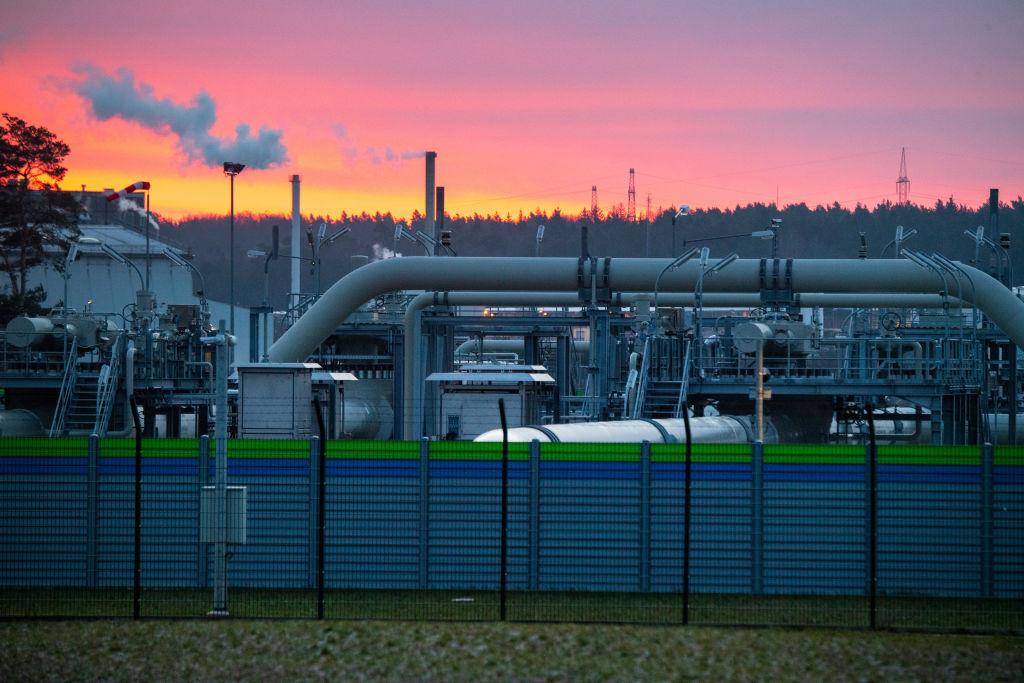
Russia and China are making much of their strategic partnership as a counterbalance to their stresses with the West, but the European Union is still much more important economically to Russia than is China, and Australia comprehensively trumps Russia as a supplier to China.
There’s no realistic prospect of China becoming an alternative market to Europe for Russia in the face of fresh sanctions targeting its exports.
Nor does the obviously warm relationship between Russia’s President Vladimir Putin and China’s President Xi Jinping bring any relief from China’s continuing dependence on Australia for raw materials.
While the numbers have bounced around from one year to the next, particularly during the pandemic, the EU and the UK combined take a little over a third of Russia’s exports compared with China’s 15%.
Energy is by far Russia’s biggest export to Europe. It delivers 40% of Europe’s gas supplies and about 27% of its oil. Around 70% of Russia’s oil exports go to Europe, compared with 18% to China.
The highlight of the meeting between Xi and Putin ahead of the Beijing Winter Olympics was a deal under which a second pipeline would be built from Siberia to supply China with an additional 10 billion cubic metres a year of gas later this decade.
Russia currently supplies China with 38 billion cubic metres a year; however, Russian gas sales to the EU are five times greater. The pipeline would have just a fifth the capacity of the Nord Stream 2 pipeline under the Baltic, from Russia to Germany. The project has been completed but was awaiting certification by Germany before deliveries could start. Following Russia’s actions this week in eastern Ukraine, German Chancellor Olaf Scholz announced that approval of the pipeline had been halted.
Russia’s finance minister, Anton Siluanov, said last week that Russia would reroute Europe’s gas supplies elsewhere if sanctions were imposed, but there are neither pipelines nor ready alternative markets.
Russia’s economic relationship with China bears some resemblance to Australia’s, although it’s much smaller in scale. It sells minerals and food and buys manufactured goods. For both Russia and Australia, 95% of goods exports to China are either primary goods or lightly processed products like aluminium and wood pulp.
One exception for Russia has been its supply of military equipment to China, although this trade is understood to be waning as China becomes a major arms supplier to world markets itself.
China’s exports to both Russia and Australia are dominated by mobile phones, computers, clothing and machinery. Russia gets more Chinese motor vehicles and fur goods than Australia, but both markets are small from China’s perspective, ranking 12th and 13th among its export destinations. Australia accounts for 2.1% of China’s exports and Russia slightly less at 2.0%.
Australia is much more important as a supplier of essential inputs to the Chinese economy, accounting for 6.6% of China’s goods imports in 2020, making it the fourth largest supplier behind Japan, Korea and the US. Russia ranked ninth with 3.3% of its imports.
The burgeoning relationship between Russia and China may, at the margins, come at some cost to Australia. Australia’s gas sales to China have remained solid amid the campaign of economic coercion targeting many of Australia’s other exports. China overtook Japan as Australia’s principal LNG customer last year, with deliveries rising by 7.1%.
However, both Russia and the US have been boosting their gas sales to China and may take market share over coming years. For the moment, LNG is in short supply globally and anything not sold to China could readily be placed elsewhere, particularly in Europe.
Russia is also an iron ore producer. Although it uses most of its output in its own steel mills with exports of only around $2 billion, it has large reserves and Chinese exploration teams are active in Siberia.
A 2020 report by the US-based Center for International and Strategic Studies notes that the trade routes between Russia and China are relatively underdeveloped. Despite the two countries sharing a 4,000-kilometre border, there are only a few rail crossings and just 25 road crossings in total. China’s Belt and Road Initiative includes projects for upgrading infrastructure along these routes.
China and Russia are both parties to a trade agreement through the Russia-sponsored Eurasian Economic Union, which incorporates Armenia, Belarus, Kazakhstan and Kyrgyzstan along with Russia in a common customs union. But the trade agreement with China, which came into force in 2019, doesn’t include any tariff reductions and is focused on harmonised customs procedures. It did include some sectoral plans aimed at fostering joint investment projects.
Actual investment flows between Russia and China are weak. Chinese investors are responsible for just 1.6% of foreign direct investment in Russia, compared with 25.4% coming from members of the EU, plus another 8.6% from the UK and 6.4% from the US. Russia is also a very minor investor in China; data from the UN Conference on Trade and Development shows it’s responsible for just 0.4% of all FDI in the country (Australia’s share, by contrast is 1.1%).
Russia became a member of the World Trade Organization in 2012 but has never made its presence felt in international trade negotiations. Other than deals with former members of the Soviet Union, it doesn’t have any comprehensive bilateral trade agreements.
The 5,400-word partnership document released following the meeting of Putin and Xi was mainly focused on strategic rather than economic issues. Where it did touch on trade, it reflected China’s agenda, declaring support for the multilateral trading system centred on the WTO and opposition to ‘unilateral approaches and protectionism’. It criticised the implementation of ‘unilateral sanctions, and extraterritorial application of jurisdiction, as well as the abuse of export control policies’.